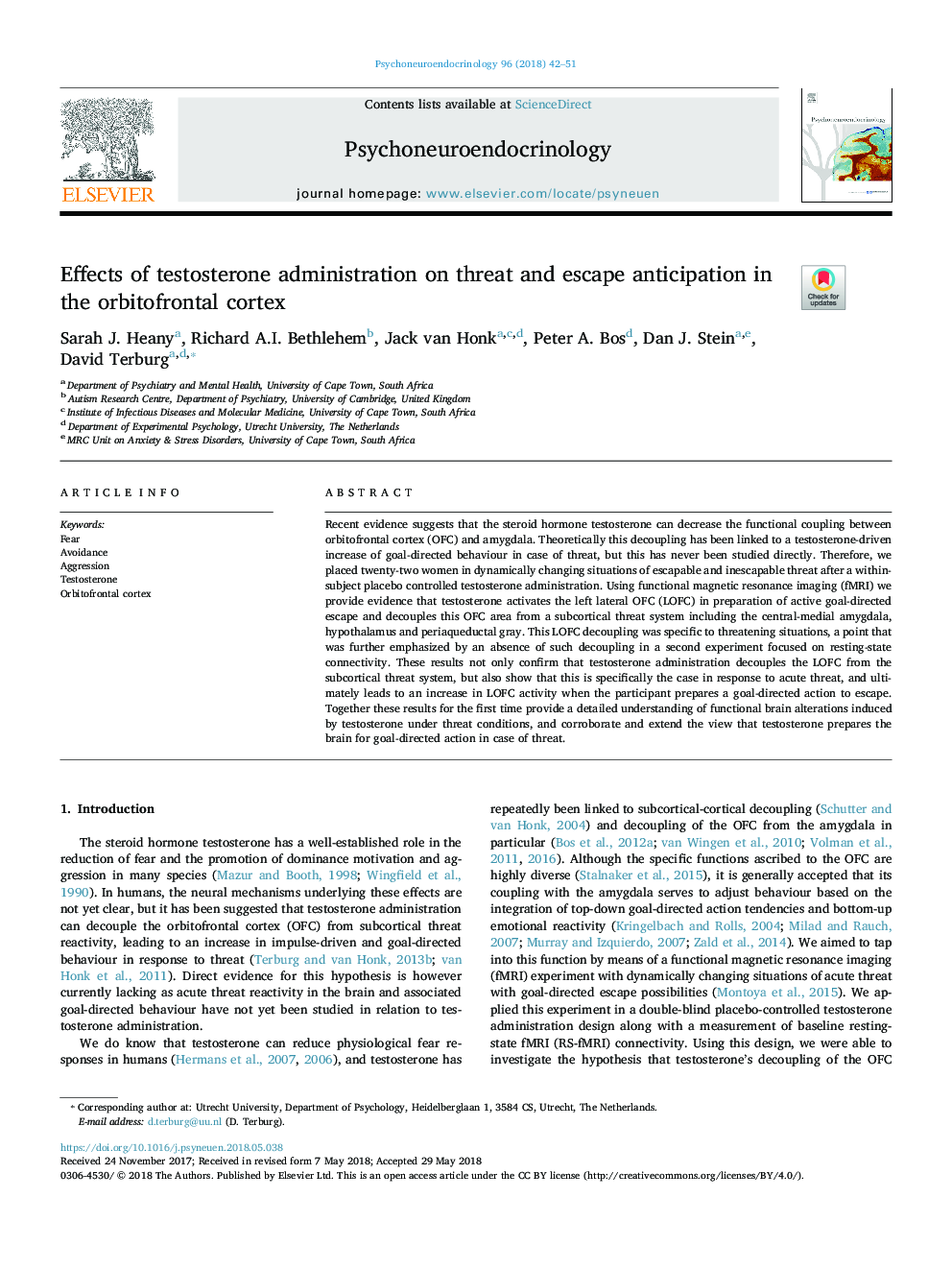| کد مقاله | کد نشریه | سال انتشار | مقاله انگلیسی | نسخه تمام متن |
|---|---|---|---|---|
| 6817512 | 1433947 | 2018 | 10 صفحه PDF | دانلود رایگان |
عنوان انگلیسی مقاله ISI
Effects of testosterone administration on threat and escape anticipation in the orbitofrontal cortex
ترجمه فارسی عنوان
اثرات تستوسترون بر پیشگیری تهدید و فرار در قشر اوربیتوفرنتال
دانلود مقاله + سفارش ترجمه
دانلود مقاله ISI انگلیسی
رایگان برای ایرانیان
کلمات کلیدی
ترس اجتناب از، پرخاشگری تستوسترون، قشر اوربیتوفرنتال،
موضوعات مرتبط
علوم زیستی و بیوفناوری
بیوشیمی، ژنتیک و زیست شناسی مولکولی
علوم غدد
چکیده انگلیسی
Recent evidence suggests that the steroid hormone testosterone can decrease the functional coupling between orbitofrontal cortex (OFC) and amygdala. Theoretically this decoupling has been linked to a testosterone-driven increase of goal-directed behaviour in case of threat, but this has never been studied directly. Therefore, we placed twenty-two women in dynamically changing situations of escapable and inescapable threat after a within-subject placebo controlled testosterone administration. Using functional magnetic resonance imaging (fMRI) we provide evidence that testosterone activates the left lateral OFC (LOFC) in preparation of active goal-directed escape and decouples this OFC area from a subcortical threat system including the central-medial amygdala, hypothalamus and periaqueductal gray. This LOFC decoupling was specific to threatening situations, a point that was further emphasized by an absence of such decoupling in a second experiment focused on resting-state connectivity. These results not only confirm that testosterone administration decouples the LOFC from the subcortical threat system, but also show that this is specifically the case in response to acute threat, and ultimately leads to an increase in LOFC activity when the participant prepares a goal-directed action to escape. Together these results for the first time provide a detailed understanding of functional brain alterations induced by testosterone under threat conditions, and corroborate and extend the view that testosterone prepares the brain for goal-directed action in case of threat.
ناشر
Database: Elsevier - ScienceDirect (ساینس دایرکت)
Journal: Psychoneuroendocrinology - Volume 96, October 2018, Pages 42-51
Journal: Psychoneuroendocrinology - Volume 96, October 2018, Pages 42-51
نویسندگان
Sarah J. Heany, Richard A.I. Bethlehem, Jack van Honk, Peter A. Bos, Dan J. Stein, David Terburg,
